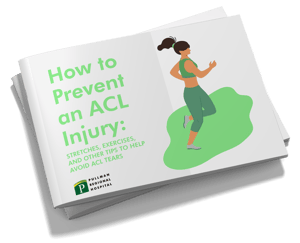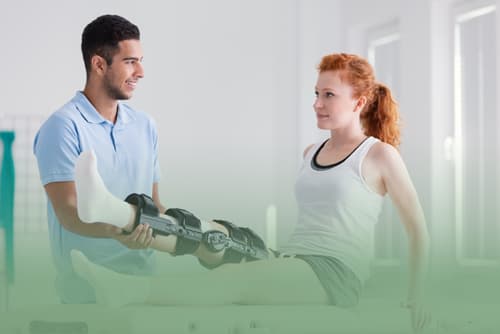Anterior Cruciate Ligament (ACL) tears are one of the most dreaded, yet common, knee injuries athletes face. It only takes a split second to happen, but can take you out of the game for several months to a year. ACL tears are most commonly found in athletes who participate in high impact sports such as soccer, football, volleyball, tennis, and basketball. Studies also suggest that ACL tears are more common in females than males. According to the American Academy of Orthopaedic Surgeons, it is proposed that this is due to “differences in physical conditioning, muscular strength, neuromuscular control, differences in pelvic and lower extremity alignment, increased looseness in ligaments, and the effects of estrogen on ligament properties.” (American Academy of Orthopaedic Surgeons)
Our dedicated orthopedic surgeons also serve as team physicians for Washington State University and have the extensive knowledge and experience to evaluate, diagnose, and treat a number of sport medicine injuries. Our ultimate goal is to help you recover from your current injury and help you prevent injuries in the future.
Types of ACL Injuries
Not all ACL injuries are the same. Many times, you may have only sprained or partially torn your ACL. Depending on the severity of your injury, different treatment options are available.
-
Grade 1 ACL injuries occur when the ligament has been mildly stretched, but still provides stability to the knee.
-
Grade 2 injuries are much less common. This is categorized when the ligament is moderately stretched or even partially torn.
-
Grade 3 ACL injuries are the most common, occurring when the ligament has been completely torn and no longer provides any sort of stability to the knee. (Johns Hopkins Medicine)
What causes an ACL Tear?
ACLs can be injured in several ways; however, these are the most common causes of an ACL tear:
-
Landing awkwardly after a jump
-
Stopping suddenly while running
-
Sustaining a direct blow to the knee
-
Pivoting with planted foot
-
Changing direction suddenly (cutting)
Signs and Symptoms of an ACL Tear
In most cases, you’ll know right away when you injure your ACL. Unlike some injuries that develop over time, ACL tears happen in an instant. While symptoms may vary depending on the individual, these are the most common symptoms people experience from an ACL tear:
-
Loud popping or crunching sensation in the knee
-
Pain and tenderness in the knee
-
Swelling and/or bruising
-
Stiffness and loss of range of motion
-
Instability or the feeling like the knee is “giving out”
Diagnosing an ACL Tear
Physical Examination - The first step in diagnosing an ACL tear is a physical examination from your physician. After describing your symptoms, the physician will perform a variety of tests to check the structure of your injured knee in comparison to your healthy knee.
X-Ray – Following a physical examination, you will likely receive an X-ray of the injured knee. Although X-ray images do not show ligaments, this step allows your physician to ensure the injury isn’t connected to a broken bone.
Magnetic Resonance Imaging (MRI) – After ruling out a bone injury, an MRI will be performed to assess the damage to ligaments, tissue, and articular cartilage. Based on the images produce from the MRI, your physician will be able to tell if the ACL is frayed, partially torn, or completely torn.
Treatment Options for ACL Tears
Non-Surgical Options – Surgery is not always required for an ACL injury. If your ACL is not completely torn, if you are relatively inactive, or if you are an elderly patient, participating in physical therapy to strengthen the knee and utilizing a brace may be sufficient.
Reconstructive Surgery – Surgery is required if more than one ligament is injured, your knee gives out or buckles during daily activity, or if you would like to return to an active lifestyle. During an ACL surgery, the torn ligament is removed and replaced with a stronger graft. Grafts can be taken from your hamstring, patellar tendon, or a cadaver. Depending on your medical history and preference, your physician will work with you to decide on the best graft for your case.
Recovery from an ACL Reconstruction Surgery
Recovery and rehabilitation after an ACL reconstructive surgery is often the hardest part, especially for those wanting to return to their previous lifestyle. Rehabilitation consists of follow-up appointments with your orthopedic surgeon to check wounds and assess range of motion, and physical therapy to help rebuild strength and stability. While there is no set recovery time, most patients take nine months to a year before being able to return to sports. It is imperative to follow your physician’s recommendations and participate consistently in physician therapy to ensure a smooth recovery.



